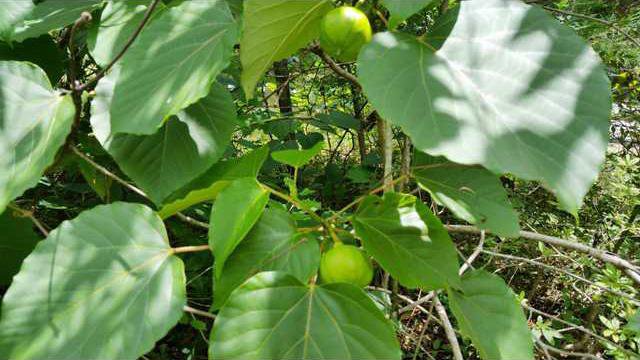The Asian native Tung Oil tree came into America during World War I and in the 1920s was cultivated on plantations from Florida to Texas.
Frost and Hurricane Camille wiped out most the tree population. The trees wound up on many farms in the South and are thought to have been introduced in our area by the U.S. Department of Agriculture around 1905.
All parts of the tree are poisonous. Many old farms still have the occasional tree on the property. The leaves are heart shaped and have reddish veins on the underside. When cut the leaves bleed latex. The green round fruit that form on the branches turn brown in fall and drop to the ground. The mature seedpod reveals very greasy nuts, inside a thick hull, which yields the oil.
In World War I the oil was used to waterproof gunstocks. The oil is often used on furniture and wood items. It is an ingredient in varnishes and paint and its properties promote rapid drying. The U.S. now imports the oil after the trees in the South have been lost for oil production.
The occasional tung oil tree is an oddity on the old farms in our area. This photo is from the Reiser Zoller Farm where my grandmother was born and reared.
This was written by Susan Exley of Historic Effingham Society. If you have info or pictures to share contact her at 754-6681 or hesheraldexley@aol.com.








